The prequels were terrible. On this the internet seems to agree. The mid-2000s weren't a spectacular time to be a Star Wars fan. When Revenge of the Sith debuted in 2005, it looked like the circle was complete and the last Star Wars movie had been made.
Then I heard that an animated series, Star Wars: The Clone Wars, was in the works. It sounded interesting, but also redundant, since the micro-series Star Wars: Clone Wars (note the absence of the definite article) had already been made. Unfortunately, I didn't have cable at the time, so it didn't make much difference. I did see the feature film in the theater back in 2008, and I watched one episode a couple years after that. Neither one really sold me on this new series. The new, "kiddie" aesthetic that permeated all the merchandise, including the Lego sets, turned me off. The whole thing seemed like a shallow imitation of the Expanded Universe novels I read in high school. And when I found out Darth Maul had been resurrected...
It was easier to dismiss this series as pointless kid stuff because I was discovering other shows like Star Trek and Stargate during the years this show was on the air. More and more, I was beginning to believe I had "outgrown" Star Wars. Sure, I would always be a fan, but I had expended enough nerd-energy on this particular franchise, and it was time to move on.
But sometimes, no matter how much you scoff, no matter how many years you look down on it, deep down inside, you know that once it's out on Netflix you're going to sit down and watch all 121 episodes.
And what was it like? Better than I had been giving it credit for. Longtime fans of the expanded universe of the novels will take satisfaction at seeing nods to established elements of the Galaxy Far, Far Away, though they may not appreciate some of the liberties taken with the source material (Ryloth, anyone?) The war feels much more like an epic galaxy-spanning conflict where "There are heroes on both sides" and "Evil is everywhere". There are a few "off" episodes (I guess the one I saw during its original airing was one of them) and some of the elements introduced into the Star Wars universe I really could have done without (particularly the Nightsisters), but it is a well-done series overall. Anakin Skywalker can't be the hot-headed apprentice he was in the movies because now he has an apprentice of his own. This has the effect of maturing the character a bit into something resembling what a viewer might imagine him to be while watching the original films, making his eventual metamorphosis into Darth Vader more of the tragedy it was meant to be.
Unlike a lot of cartoons, the writers are not afraid to mention or depict death, though neither does it seem overly violent (about level with the live-action films). It's quite mature for an animated series (and I mean the "let's act like real grown-ups" kind of mature, not the "Rated M for" mature).
The Clone Wars have been a part of Star Wars lore since the original film. The prequel trilogy was hardly able to do it justice, however, by beginning he conflict at the second film's conclusion and ending it midway through the third. By the time Order 66 was issued, the casual moviegoer would be lucky to know the names of the Jedi we saw gunned down by their own troops, let alone feel much emotional impact. The Clone Wars provides the Star Wars saga with a chance to do some real worldbuilding, as every moment of screentime need not be rationed for the sake of advancing the overarching series plot.
The sad part is, it would have been better if this series had been airing between 2002 and 2005, between Attack of the Clones and Revenge of the Sith. What was needed was, oddly enough, filler. Filler is important because it gives the audience a chance to get to know characters. If we had seen some of this series before Episode III, maybe the Order 66 montage would have carried a stronger emotional impact; I don't believe that any of the Jedi shown killed in that sequence are ever named in the films themselves, and most of them didn't even have a speaking role (Plo Koon, anyone?) A TV series gives writers the chance to develop a number of minor characters and the fans a chance to pick out their favorites (who may be different from what the writers intended). The Clone Wars was exactly what Star Wars needed, but it was about six years behind schedule. Sure, there were plenty of books, comics, video games, and that Cartoon Network "micro-series", all released in that timeframe, but all that stuff didn't quite have the same level of cohesion, and didn't reach nearly the same number of people the films did. I bet if this series had begun airing shortly after Attack of the Clones was released, capitalizing on the film's publicity, it would have reached an audience comparable to the movies.
I mentioned before that Star Wars is a good example of the generic single-environment planets that occur way too often in sci-fi: the desert planet, jungle moon, ice planet, etc. The Clone Wars is very much the opposite, and it's pretty clear why. In an all-CGI series, planets don't always have to look photorealistic, and they need only appear for one episode, allowing for many more planets to be depicted, providing a little more room to be creative. And the makers of this series were creative. With the declaration that most of the pre-existing Star Wars Expanded Universe is being jettisoned to allow more creative freedom with J.J. Abrams's Episode VII and beyond, and that this TV show is one of the only works to survive that action, the strange new worlds depicted help me believe that the decision was a good one. I'm optimistic for the upcoming Star Wars Rebels series and, of course, Episode VII.
With all that in mind, presenting...
Top Ten Clone Wars Worlds
Note: all images, and some of the info in the accompanying text, are from the Star Wars Databank, found here: http://www.starwars.com/databank (remember kids, always cite sources!)
10. Malastare (Barren planet)
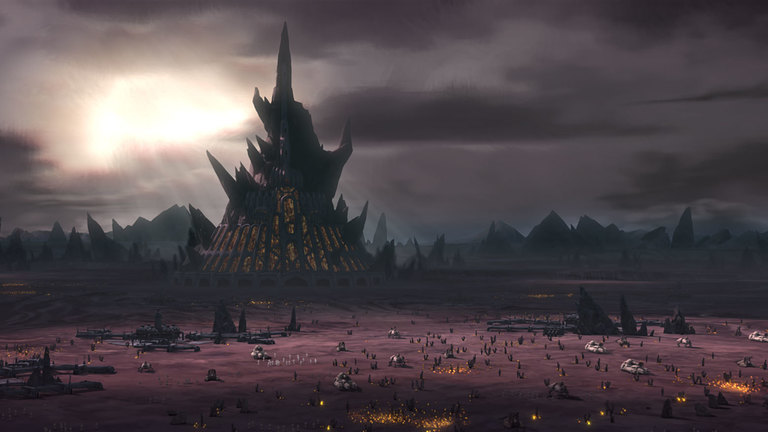
This planet actually got name-dropped a couple of times in the movies, and I remember it had a few podracing tracks in Star Wars Episode I Racer. That *was* a good game...wonder if it's on Steam...(EDIT: nope).
It's satisfying to see a planet that doesn't readily fit into an Earth biome, even if it is a bit generic. Malastare is probably one of the most likely planets to actually exist somewhere. No vegetation or herd animals in sight though...gotta wonder what that Zillo Beast ate every day.
9. Mon Cala (Ocean planet)

We did see an ocean planet in Episode II (Kamino), but only the stormy surface. I've occasionally heard it said that Earth's oceans are much more diverse than all its land biomes combined, so exploring an underwater world should open up a lot of possibilities. I didn't see a lot that stood out in the few episodes featuring this planet, but it still gets points in my book for the potential. I also applaud the writers' decision not to call it "Mon Calamari", as naming an aquatic planet and aquatic species after a seafood dish makes it difficult to take either one seriously. (In addition, I applaud the writers' use of a young Admiral Ackbar in three episodes without once having him declare that something is a trap.)
8. Teth (Purple planet)
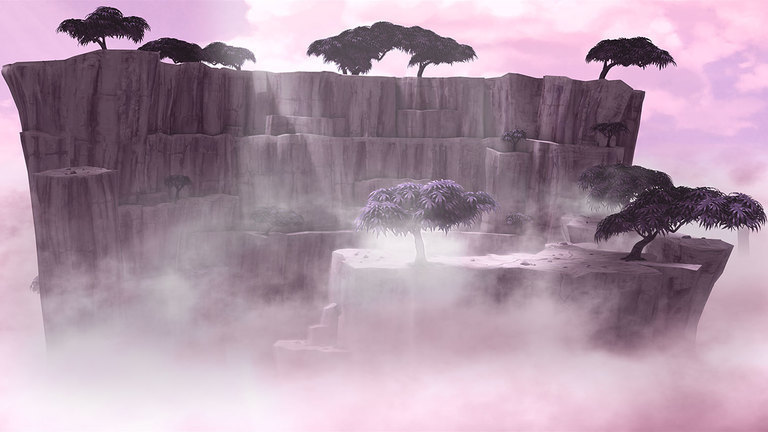
This planet appeared in the feature film and stuck with me because of the epic sideways battle taking place on a cliffside, but it sticks with me because of its purple color palette, which isn't seen in nature a lot. While variation in a color palette is sometimes a good rule of thumb for visual design, there are times when a more monochromatic approach works, and this is a good example.
7. Christophsis (Crystal planet)
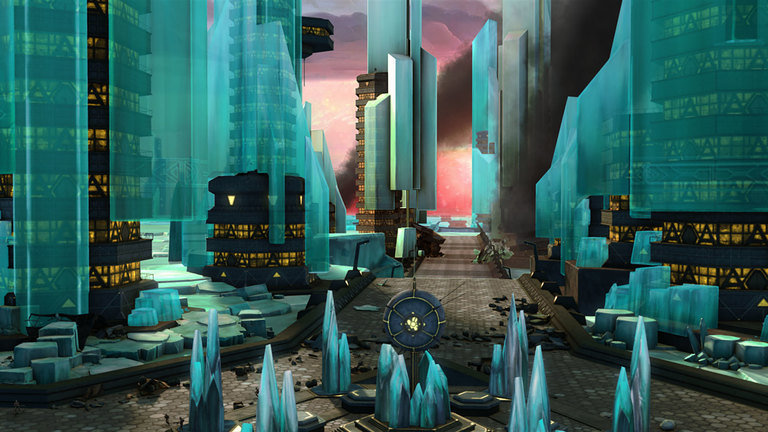
First impressions are important, and despite the feature film's lackluster performance, Christophsis represents a promising start. I have to wonder whether those crystals are artificial constructs (really avant-garde architecture?) or naturally occurring formations, possibly silicon-based life forms that have been hollowed out and inhabited by the natives the way trees are used by the Wookiees, or the Berenstain Bears.
6. Carlac (Snowy-blossom-tree-forest planet)
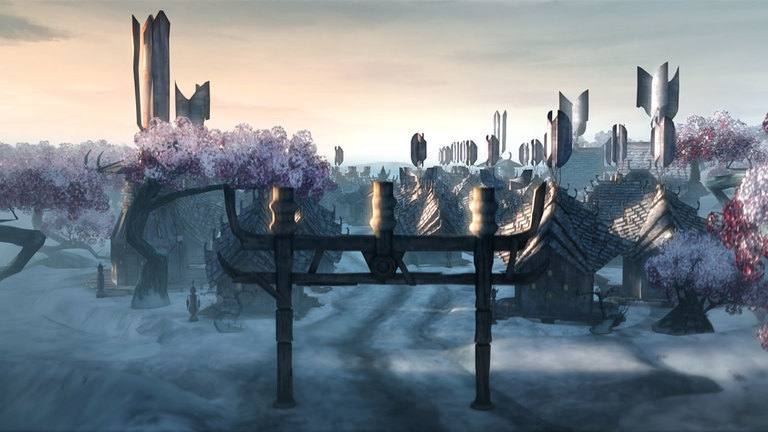
The visual designers seem to have been going for a Japanese look here; not sure if there are any real-world trees that blossom during the snowy months, but I suppose if a planet has a colder climate, there's no reason deciduous plants couldn't retain their foliage in the deep winter. Evergreens manage it on Earth, after all. Also, I shouldn't presume that just because Ahsoka Tano happened to land here when it was snowy, that the planet is always snowy; if an alien had landed in the U.S. during last winter's polar vortex in a starship with no windows, they might have decided Earth was just like Hoth.
5. Rugosa (Coral-desert planet)
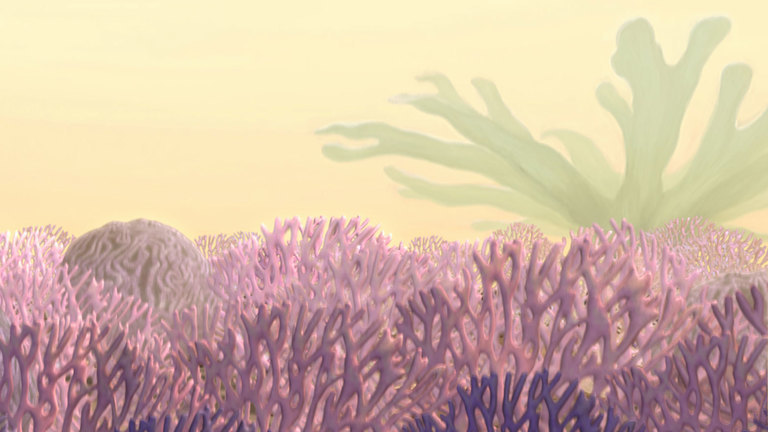
Again, first impressions matter, and a desert planet full of coral is a good place to set your first episode. Not sure if this is meant to be a dried-out ancient seabed and the coral is long-dead, or if this coral actually thrives in an arid environment. Either way, it looks really cool. Interestingly, the planet appears to have been named for a real-life order of extinct coral.
4. Saleucami (Balloon-tree-desert planet)
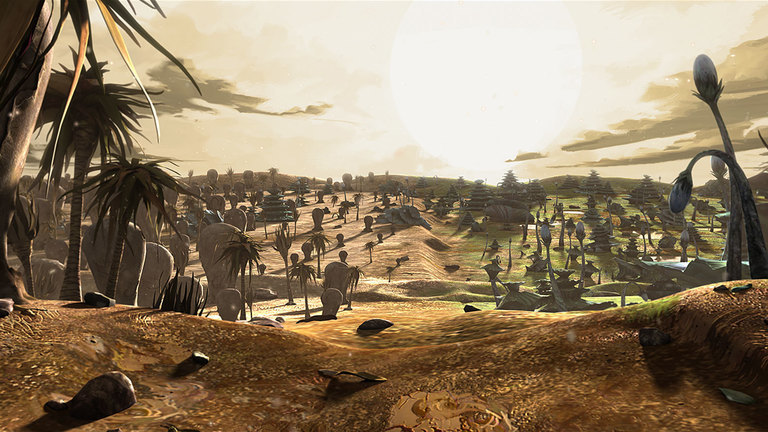
This planet showed up during the Order 66 montage in Episode III, and it wasn't quite clear in the few seconds of screentime whether those giant bulbs were intended to be life forms or rock formations. I'm reminded of the Balloon Trees from Blue Moon in the Extraterrestrial documentary I linked to before. I do like how the TV show portrays a planet with multiple diverse types of plants, and not just the balloon trees.
3. Felucia (Fungal-jungle planet)
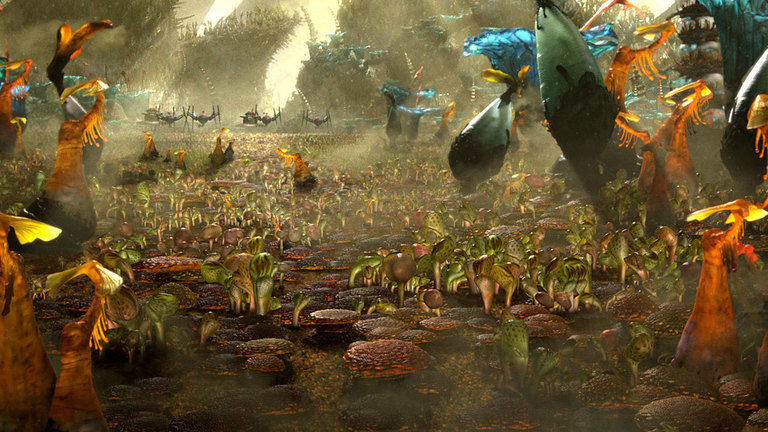
This place really stood out the first time I saw it in Episode III. Giant colorful fungus in place of trees! Do these photosynthesize, or is that role filled by airborne algae (explaining the slight haze in the air)? Either way, it's exactly the kind of planet I'd like to see in Episodes VII, VIII, and/or IX.
2. Umbara (Laser-tag-arena planet)
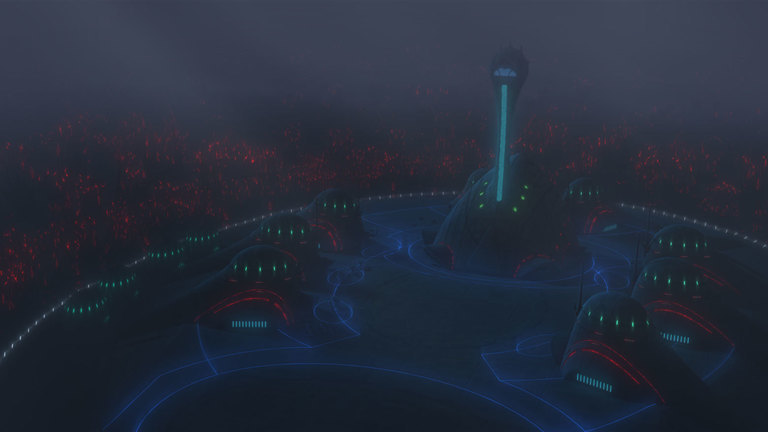
When I was in elementary school, I spent a few birthday parties at Grand Slam, and the best part was always the laser tag arena, with everything glowing fluorescently in the dark. I liked to imagine it was an alien planet (specifically, orbiting the star Vega, and inhabited by hammer-headed interstellar warmongers). The older I got, the more I realized that a laser-tag arena didn't make a very realistic planet.
Umbara is the setting for a four-part story arc focusing largely on the clone troopers duking it out with the hostile locals (who mysteriously wear space helmets, even though the non-native clones don't seem to need breathing equipment; maybe it's just part of their battle armor). It's always dark, and the plantlife and structures glow fluorescently, essentially making the entire setting one giant lasertag arena. Bioluminescence seems at risk of being overused in sci-fi, but here it's done with some level of restraint, which I think is for the better. It's really satisfying to see an idea I liked as a kid then dismissed as unrealistic as I got older be given a believable treatment as an adult.
1. Raydonia (Neon-forest planet)
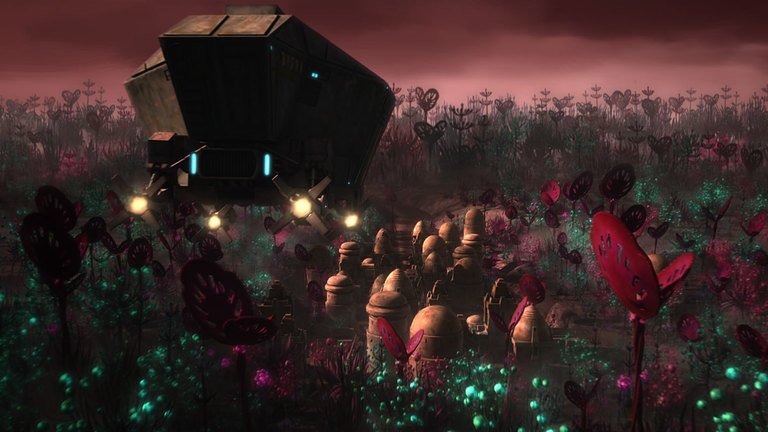
This planet only got a brief treatment in the series when Darth Maul came here to draw out Obi-Wan Kenobi, but it still looks really cool. It's basically Umbara in daylight: weird plants with bioluminescence, and a salmon-colored sky for no adequately-explored reason. Maybe the plants are giant flowers, and the sky gets its color from heavy quantities of space pollen? Point is, it looks cool, and sometimes that's all that matters.
No comments:
Post a Comment